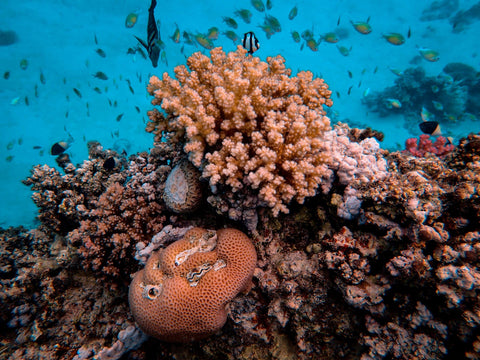It’s easy to get bogged down in the bad news when it comes to the Great Barrier Reef. Coral bleaching; reefs in decline; invasive species… You would be forgiven for thinking it’s all doom and gloom off the coast of northern Queensland.
But this isn’t the full picture.
Yes, the prognosis is bleak if we don’t take immediate climate action, but this story doesn’t have to end in tragedy. There is potential for a happy ending, so says Dr. Ian McLeod, Program Director of the Reef Restoration and Adaptation Program.
“If we can take the necessary steps over the next few decades to mitigate the effects of climate change, continue existing management, and include new interventions, it is entirely possible that the reef could recover,” he says, from his base in Townsville. “It will look a bit different, but it will be beautiful. We just have to take those necessary steps now.”

Fortunately, the Great Barrier Reef is actually in better shape than many other coral reefs around the world. This is partly due to its sheer size and scope: It’s visible from outer space, and is the world’s largest living structure. It is also due to the fact that Australia leads the world in coral reef management.
Despite the relatively good condition of the Great Barrier Reef, it is still vulnerable to the effects of climate change.
When corals are under thermal stress, they can release the algae living in their tissues, this causes them to turn white which is where we get the term ‘coral bleaching’. This loss of vibrancy and colour is one thing, but coral bleaching can lead to large-scale coral death.
Clearly, we stand to lose a lot. The GBR contributes over $6 billion to the Australian economy per annum, and is responsible for over 64,000 jobs.
But for Dr. McLeod, it's worth cannot be quantified in a monetary figure: “It’s a part of our national identity. It’s a natural wonder of the world, has immense cultural value for Traditional Owners, and is a part of who we are.”
In light of this, the work carried out by the Reef Restoration and Adaptation Program is safeguarding this part of our shared national identity, and it is doing so in some pretty mind blowing ways.
The RRAP R&D Program is developing interventions to help cool and share the reef to help protect it from the impacts of climate change, assisting reef species to adapt to the changing environment and supporting natural restoration of damaged and degraded reefs.

“We are developing advanced coral aquaculture techniques, selectively breeding from coral stock that are more resistant to bleaching, and then using guided deployment to massively scale-up from what has been achieved so far”.
“At the same time we are investigating ways to increase the reflectivity of clouds so that less solar radiation gets through to the reef below,” he says. “We are also investigating ways to enhance the recovery of sections of reef that have been degraded through techniques such as rubble stabilisation.”
The future of the GBR is dependent on the actions we take today. According to Dr. McLeod, there is still hope and he encourages people to come and experience the reef. The more you love and treasure it, the more likely you are to share that passion with your friends and family.


